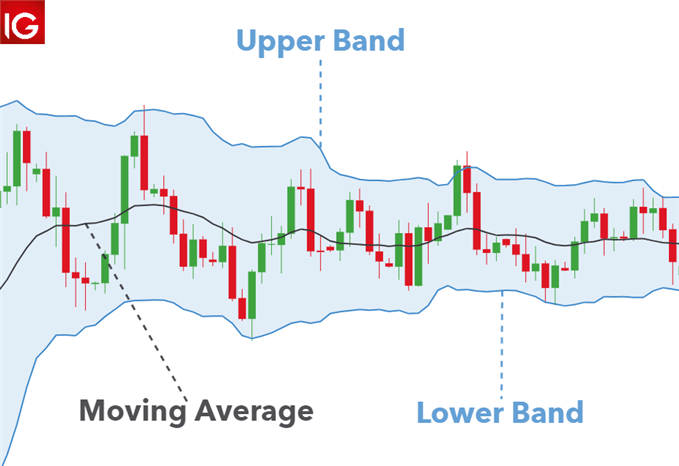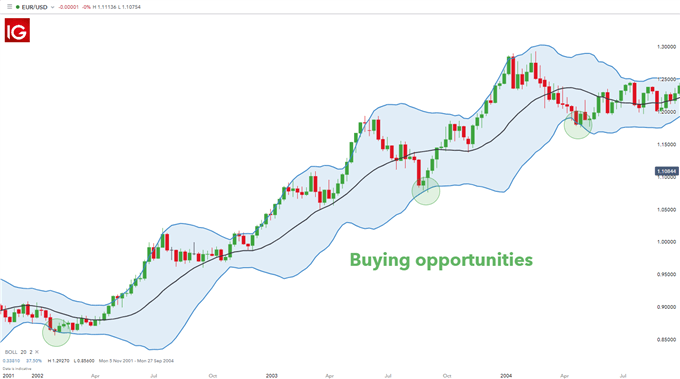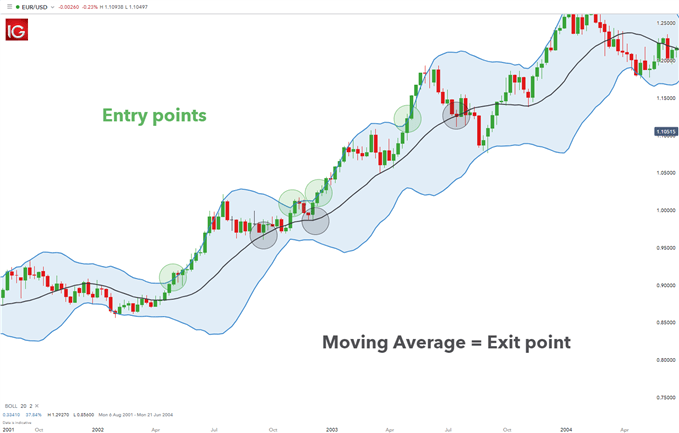
How to Use Bollinger Bands® in Forex Trading
(MENAFN- DailyFX) Bollinger Bands® are utilised by technical traders in all financial markets including forex. This article will introduce Bollinger Bands® and how they assist traders in technical analysis. It will also provide an overview of top strategies and tips for trading forex with Bollinger Bands® - including trading the trend and the Bollinger squeeze.
What are Bollinger Bands® and how to do they work?Bollinger Bands® are a versatiletechnical analysis indicatorwidely used among traders. John Bollinger first developed this indicator as a solution to find relative highs and lows in dynamic markets. The indicator itself is comprised of an upper band, lower band andmoving averageline.
The two trading bands are placed two standard deviations above and below the moving average (usually 20 periods). Using two standard deviations estimates that 95% of price data will be contained within the two bands.

As a rule of thumb, prices are deemed overbought on the upside when they touch the upper band and oversold on the downside when the reach the lower band.
As price oscillates between the indicators upper and lower extremes Bollinger Bands® become an excellent tool to gaugevolatility . When bands contract there is less volatility in the market, which is a great indication to use arange bound strategy . Likewise, Bollinger Bands® will expand as the market becomes more volatile. At these times traders may employ a breakout or atrend-based strategy .
How to trade Forex with Bollinger Bands®There are several different techniques involved in using Bollinger Bands® to trade the forex markets. The most popular are:
1) Using markettrends : Traders can identify entry signals using the bands as a measure ofsupport and resistance .
2) Bollinger Squeeze: Applying the volatility indications of the bands
1) Trading the trendEUR/USDweekly chart

The chart above shows the EUR/USD chart in an uptrend – depicted by higher highs and higher lows. Using the Bollinger Band® indicator, the lower band is seen as a gauge of support. When price touches the lower band, traders use this as a signal to enter a long (buy) trade. This strategy works for both uptrends and downtrends. Take profit (limit) levels are generally taken from the upper and lower bands depending on trend. In this example, the upper band will be used as the take profit level.
In summary, trading the trend with Bollinger Bands® is relatively simple:
Identify the trend Use upper and lower bands in conjunction with price movement to identify entry points Use respective upper and lower band as target levels 2) Trading the Bollinger Band® SqueezeEUR/USD weekly chart:

As mentioned previously, when the bands contract volatility is low and vice versa. The Bollinger squeeze looks for breakouts above/below the band depending on trend to be used as entry signs.
Highlighted in green shows these breakouts in an uptrend. Traders will look to enter at the indicated green circles. After each entry, it can be seen that the candles are 'walking the Bollinger' (following the upper band). After the breakout candle the bands expand implying greater volatility in the market.
The black shaded circles illustrate the point at which traders will look to take profit before looking for further breakout signals.
To summarise, when trading the Bollinger Band® squeeze:
Look for low volatility (contracting bands) Wait for breakout of upper/lower band Close trade when price reaches moving average Further reading on trading Bollinger Bands® and forexGet to grips with a Bollinger scalping strategy with our guide toDay trading Bollinger Bands® Learn how to use theBollinger Bands® and MACD combination . Keen to improve your knowledge of technical indicators? We round up the besttechnical indicators for forex traders. For more in-depth study, read ourTraits of a successful tradertraining guide to learn what it takes to be the best.
Legal Disclaimer:
MENAFN provides the
information “as is” without warranty of any kind. We do not accept
any responsibility or liability for the accuracy, content, images,
videos, licenses, completeness, legality, or reliability of the information
contained in this article. If you have any complaints or copyright
issues related to this article, kindly contact the provider above.


















Comments
No comment